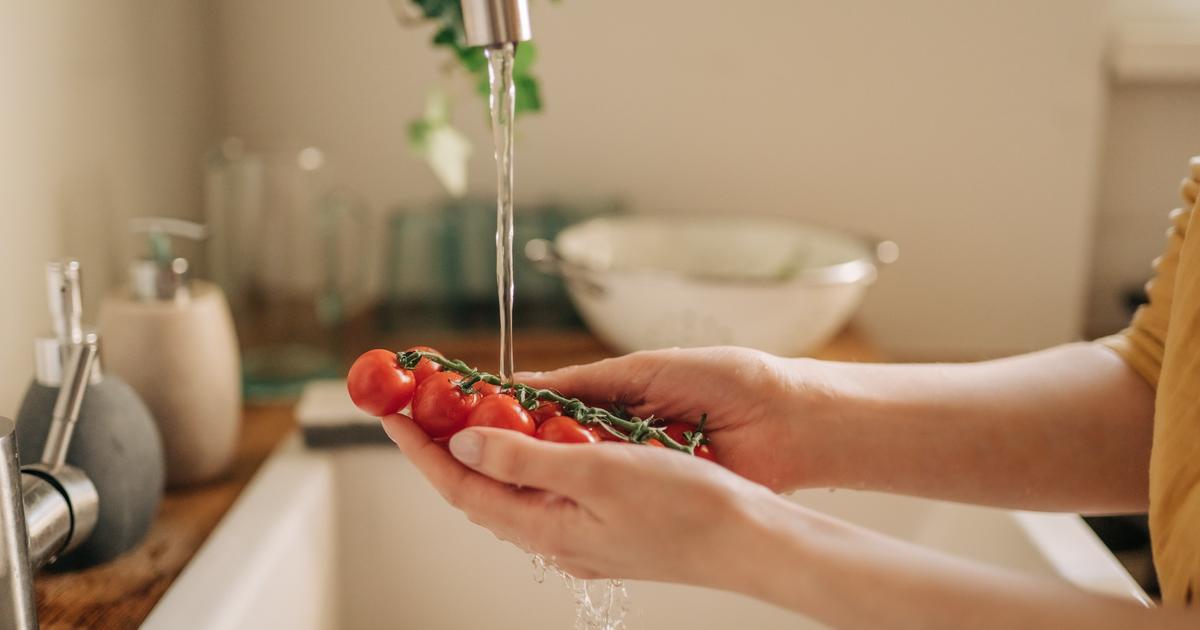Why is cleaning fruits and vegetables with bleach often practiced in restaurants?
There are protocols intended specifically for the food industry, hotels and restaurants regarding the use of bleach in cooking.
Indeed, the latter may be authorized to use bleach for the maintenance of premises and equipment, but also to clean fruits and vegetables.
However, this is possible because the quantities cleaned are greater, but also because strict instructions have been put in place.
According to the book
La cuisine dereference
by Michel Maincent-Morel (1), this technique considerably improves the microbiological quality of raw vegetables, that is to say raw vegetables.
To do this, use two drops of 12° chlorometric bleach for 1 liter of water, or 10 cl for 100 liters of water with soaking for approximately 5 minutes.
To discover
Download the Le Figaro Cuisine app for tasty and authentic recipes
In addition, abundant rinsing with clean water is mandatory after each cleaning of fruits and vegetables to remove all traces of bleach.
If this protocol is not respected, the health of consumers is threatened.
Training in this preparation is therefore essential to know how to properly wash vegetables without harming the health of others.
People who frequently use this method on a daily basis can use it at home by adjusting the doses.
But for the uninitiated, the practice can represent a risk.
Also read: 10 things you can do with white vinegar
Do fruits and vegetables washed with bleach pose a risk of food poisoning?
Bleach is a powerful disinfectant used in particular as a household product in many homes.
If it is very effective on floors, walls or even bathrooms, it is legitimate to think that the product can disinfect other objects.
However, for domestic use, bleach is strongly not recommended for cleaning fruits or vegetables.
Whether used pure or diluted in clear water, bleach remains toxic if ingested, even in small quantities.
When cleaning, the product becomes embedded in the flesh of the vegetable.
It can therefore represent a health risk, including if it is peeled or cooked.
In addition, ingesting bleach can be particularly dangerous for the most fragile, such as young children.
Poison control centers regularly receive calls for poisoning following cleaning of food with bleach.
To avoid an emergency of this type, it is therefore best to keep bleach out of reach of food.
What are the symptoms in case of poisoning following washing fruits and vegetables with bleach?
When bleach is used diluted, it is considered less hazardous to health.
However, symptoms of various nature may occur.
The most common are cough, irritation or pain in the throat as well as vomiting.
Note that the severity of symptoms may be increased in children under 5 years old.
However, if the bleach was used pure or improperly rinsed after washing, there is a real risk to the person who consumed the affected fruits and vegetables.
In addition to the previous symptoms, it can lead to serious complications in the stomach.
This is an emergency situation and the poisoned person must be taken to the nearest poison control center or hospital.
Using alternatives to diluted bleach such as white vinegar or simply plain cold water allows you to properly clean fruits and vegetables while protecting the health of everyone who will eat them.
(1)
Reference cuisine
, by Michel Maincent-Morel, Éditions BPI, 1208 pages, €49.
The reference cuisine - Michel Maincent-Morel
Service
This article was written completely independently by the editorial staff of Madame Figaro.
When you purchase a product, work or service via our sales links, we may receive a commission.
Loading

